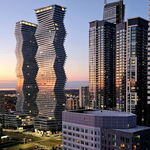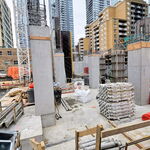Hopefully they will do that work before the train starts to run. This way the second locomotive wouldn't be required and they can add another revenue generating car instead for the same axle count.
I guess that depends on how they envision any potential service would be run. They've been using them as-is for the time being with no issues.
If they are going to run an overnight train, does that mean lay flat seats or possibly sleeper cars? But there aren't any in their fleet now so would they just swap out the current seats for ones that become more flat?
This is a good question. Maybe I need to read through the report again, but I didn't see anything about how they would configure the equipment for such a service.
They do have some older sleepers.
I'm fairly certain that those sleepers have long since been scrapped. If they are somehow still around, they would now have been sitting for about 26 years, and so would need a LOT of work.
It was my understanding that they had the prime mover and traction motors removed and generators installed (or the prime mover converted to consist power - I don't know how those things work). I have also heard that the refurbishment was less than ideal and they had been having some reliability issues.
They did have a lot of issues getting them into service, but they seem to have managed to correct all of them.
As for how they were built, they removed the original EMD prime mover and alternator (and air compressors, and radiators - basically leaving the shell completely empty) and fitted a small skid-mounted diesel engine and alternator that is better configured for this kind of service.
It might be simple things, like the crews have not been cleared or trained on that platform (as far as I know they have no other F40s) or trained on control unit operations, or that they haven't even tested to see if the controls function properly. It's not something they need on the PBX which is what the units were bought and converted for. Maybe they left the controls in for future consideration, or simply didn't want to pay to have them removed.
I can't see training being a game-breaking activity, especially since the cabs of these things are configured almost identically to three-quarters of ONR's existing fleet. It is more likely that much of the original equipment required for operating them/a train was fitted into the two units from their days in service with Amtrak is still there, but has not been touched in many years (or has even been cannibalized) - which is why they can't be made to lead right now. But again, that isn't a big deal for the forces at the North Bay Shops.
I'm not married to the idea, but I would think simply cutting a train in two isn't all that time consuming. Freight, including autos, simply would terminate in Cochrane. But - I'm not the freight and passenger cars are assembled in distinct sets. I have seen footage showing freight, passenger then freight on the end. There must be a reason for this.
It's not overly onerous, no. But there are rules around it, and there are certain things - brake tests, for instance - that are required of the process. There is absolutely a time factory to take into account, too.
The equipment all has to be marshalled together in such a way to allow the passenger cars to have power. Whether that means all of the coaches at the back or at the front is less important.
What may be more important, however, is how it is marshalled vis-a-vis switching operations at one end or the other. There is lots of room to maneuver at Cochrane, so I suspect that the orientation of the cars doesn't matter so much. But at Moosonee, I don't believe that the run-around track is long enough to handle more than a pair or trio of locos, so to save time for everyone it may make most sense to have the freight located on the tail end of the train. That way the locos pull into the station, cut off of the train, run around to the back, and grab the freight cars to bring them to their set of tracks for unloading.
I just think having the facilities to either turn the train or run the power around at Timmins is an expense the government won't be willing to pay.
Running the power around would imply that they would (likely) require a pair of locos to run the train, which seems excessive and a huge waste of resources. At the same time, I don't think that building a wye is such a bit deal/cost - keep in mind that it doesn't need to be located right at any potential terminus - there is no reason why they couldn't build one at one of the mine spurs.
Dan




